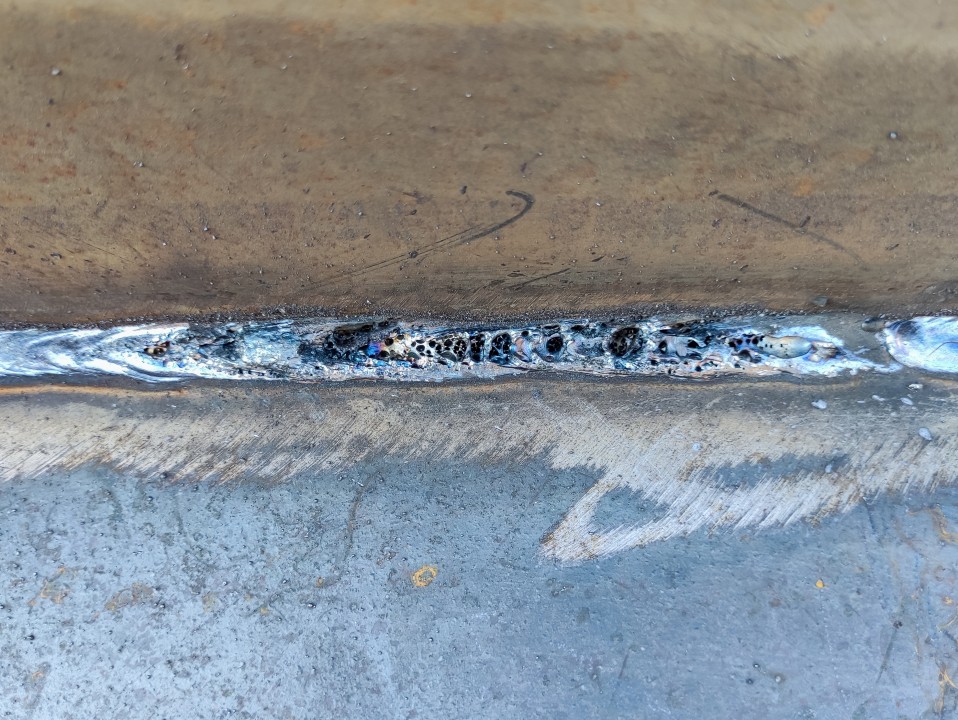Understanding Porosity in Welding: Checking Out Reasons, Impacts, and Avoidance Strategies
As specialists in the welding market are well mindful, understanding the causes, effects, and prevention strategies related to porosity is important for attaining robust and trustworthy welds. By diving right into the root creates of porosity, analyzing its detrimental impacts on weld high quality, and checking out efficient prevention techniques, welders can improve their expertise and abilities to generate premium welds constantly.
Usual Reasons For Porosity
Contamination, in the type of dirt, oil, or rust on the welding surface area, develops gas pockets when heated up, leading to porosity in the weld. Inappropriate shielding takes place when the protecting gas, typically used in procedures like MIG and TIG welding, is not able to totally protect the molten weld swimming pool from reacting with the surrounding air, resulting in gas entrapment and subsequent porosity. In addition, inadequate gas insurance coverage, typically due to wrong flow prices or nozzle positioning, can leave components of the weld unprotected, enabling porosity to form.
Effects on Weld High Quality
The presence of porosity in a weld can substantially endanger the total high quality and stability of the bonded joint. Porosity within a weld creates voids or tooth cavities that damage the framework, making it a lot more vulnerable to splitting, deterioration, and mechanical failure. These gaps work as stress concentrators, decreasing the load-bearing capability of the weld and boosting the probability of early failing under used tension. Furthermore, porosity can likewise work as prospective websites for hydrogen entrapment, additional exacerbating the destruction of the weld's mechanical properties.
Furthermore, porosity can prevent the effectiveness of non-destructive testing (NDT) techniques, making it testing to discover various other problems or gaps within the weld. This can cause considerable security problems, particularly in important applications where the architectural integrity of the bonded elements is critical.

Avoidance Techniques Introduction
Given the destructive impact of porosity on weld high quality, reliable prevention methods are vital to keeping the architectural stability of welded joints. One of the primary prevention techniques is complete cleansing of the base materials prior to welding. Impurities such as oil, grease, corrosion, and moisture can contribute to porosity, so making sure a clean job surface area is important. Correct storage of welding consumables in dry conditions is also critical to stop moisture absorption, which can lead to gas entrapment throughout welding. Additionally, selecting the ideal welding specifications, such as voltage, current, and travel rate, can aid minimize the risk of porosity development. Making certain ample securing gas circulation and coverage is one more important avoidance technique, as insufficient gas coverage can result in climatic contamination and porosity. Proper welder training and accreditation are essential for applying preventive procedures properly and continually. By including these avoidance strategies right into welding methods, the event of porosity can be dramatically decreased, leading to stronger and much more dependable bonded joints.
Importance of Correct Shielding
Correct this page protecting in welding plays an essential duty in stopping atmospheric contamination and making certain the integrity of welded joints. Shielding gases, such as argon, helium, or a mixture of both, are commonly made use of to secure the weld pool from responding with elements in the air like oxygen and nitrogen. When these responsive aspects enter into contact with the hot weld swimming pool, they can trigger porosity, causing weak welds with minimized mechanical buildings.

Inadequate protecting can result in various defects like porosity, spatter, and oxidation, jeopardizing the architectural stability of the bonded joint. Sticking to proper securing techniques is important to produce high-quality welds with very little flaws and make sure the long life and integrity of the welded parts.
Tracking and Control Techniques
How can welders properly keep track of and manage the welding process to guarantee ideal results and avoid problems like porosity? By continuously keeping an eye on these variables, welders can recognize variances from the ideal problems and make immediate adjustments to prevent porosity formation.

In addition, executing correct training programs for welders is important for keeping track of and regulating the welding process properly. What is Porosity. Informing welders on the relevance of maintaining regular parameters, such as appropriate gas protecting and take a trip speed, can aid protect against porosity problems. Normal analyses and qualifications can also make sure that welders excel in surveillance and managing welding processes
In addition, making use of automated welding systems can boost tracking and control capacities. These systems can specifically control welding specifications, lowering the possibility of human error and making certain regular weld high quality. By combining sophisticated tracking modern technologies, training programs, and automated systems, welders can effectively monitor and manage the welding procedure to reduce porosity problems and achieve top notch welds.
Verdict
